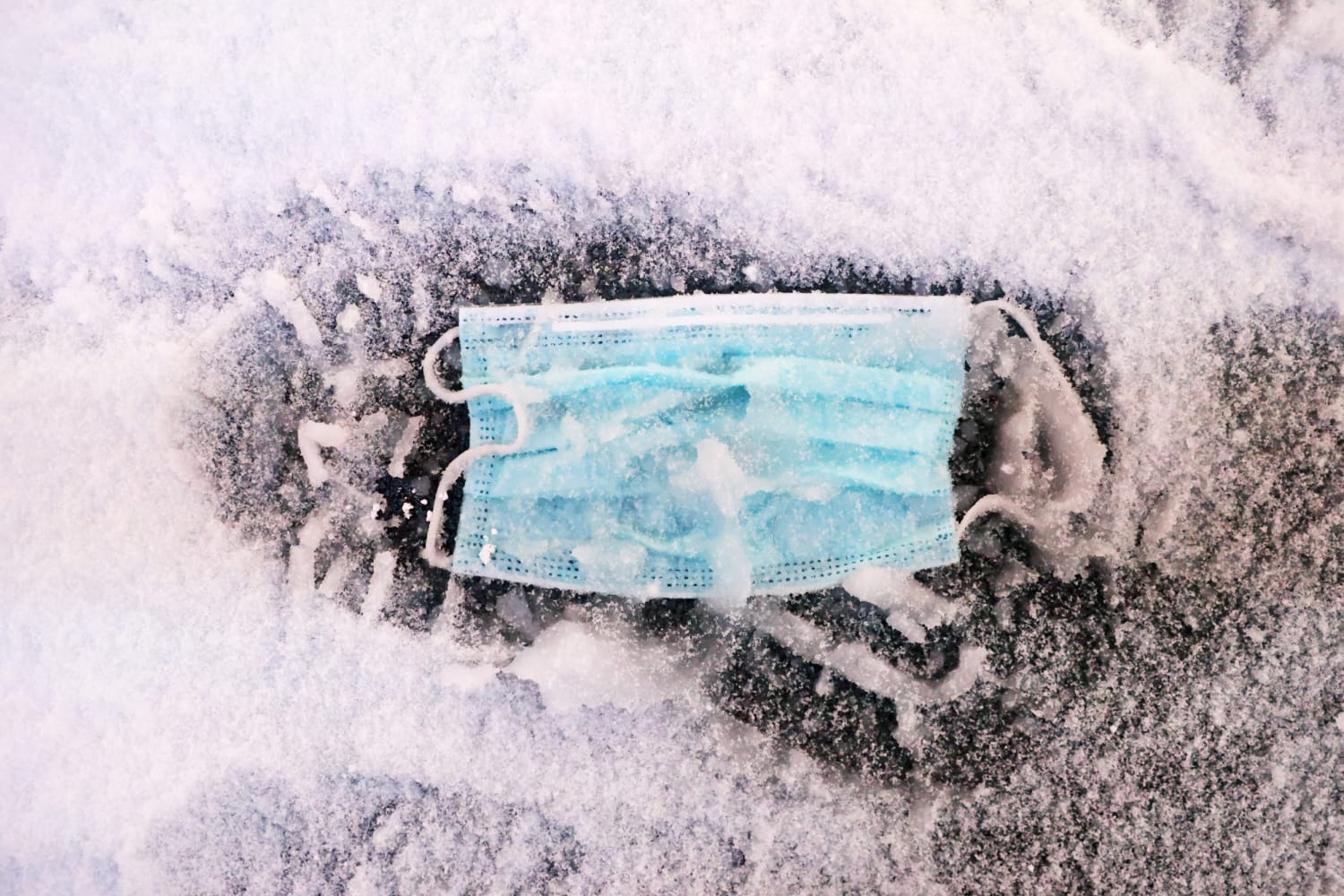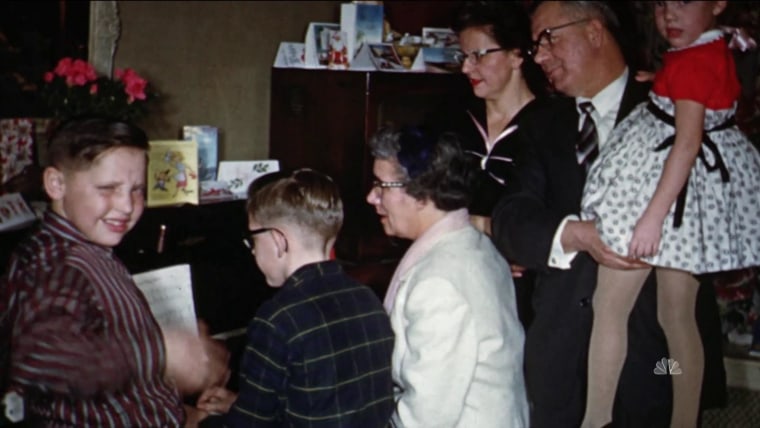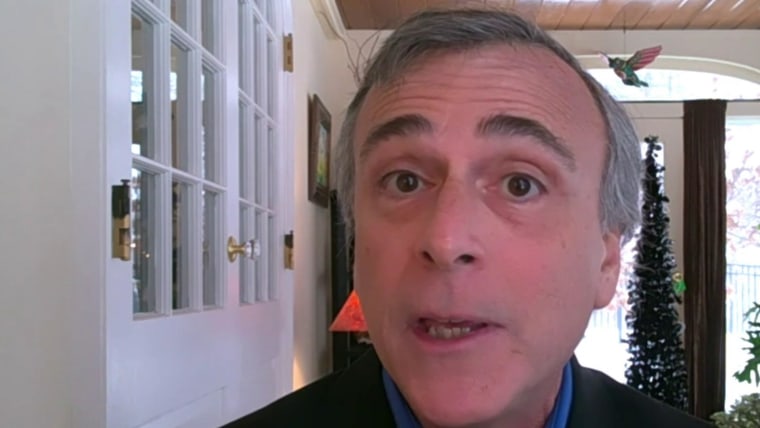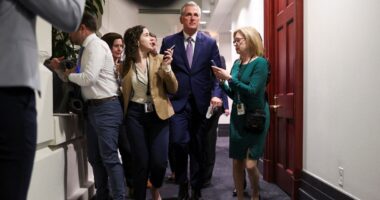CENTERVILLE, Ohio — The families of Lauren Brinkman and Dr. Kelly Carr share many similarities.
The two women both work in health care and have children of similar ages. They’re separated by a two-hour drive down Interstate 71 in Ohio. And they’re both trying to stay safe during the Covid-19 pandemic.
Like millions of other people, Brinkman and Carr are making near-constant calculations about their daily activities. Every soccer practice, patient appointment and gym session now goes into a mental map that tests their personal risk tolerances against their mental and emotional capacities.
“You think you can buckle down and just stay holed up in your house,” Carr said. “Telling people day after day that they need to stay within their household is just brutal.”
There are differences, too. Carr and her husband each operate their own small business. Brinkman’s husband works in the restaurant industry, which has been hammered by the pandemic. Carr lost a close friend to Covid-19. Brinkman has known people who have had only mild cases.
Together, the differences illustrate how people in seemingly similar circumstances can make different choices. Brinkman’s kids are still attending school and day care. Carr’s aren’t. Brinkman’s family still occasionally dines indoors. Carr’s doesn’t.
“We’re doing semi-normal things, but at the same time, our awareness is much more heightened,” Brinkman said.
This Christmas, the message from public health professionals is clear: To avoid contracting or spreading Covid-19, people should stay home, stay socially distant, stay safe. Lives literally depend on reducing the spread of the disease.
But as there have been throughout the pandemic, there are people following the letter of public health advice and others who aren’t. An easy explanation is that people in the latter group aren’t taking the pandemic seriously, which is certainly the case with a small segment of the population. However, the motivation behind many people’s day-to-day choices is more complicated.
“Any public health approach that relies solely on personal responsibility is doomed to fail,” said Julia Marcus, an epidemiologist and associate professor of population medicine at Harvard Medical School and Harvard Pilgrim Health Care Institute, who has written about quarantine fatigue.
“Very few people want to get sick or get other people sick,” she added.
Divergences in individual behavior are to be expected, especially when local authorities, concerned about people’s financial well-being, leave open many businesses that carry higher risks of exposure to Covid-19.
Instead of shaming people for not staying home, Marcus said, public health efforts should use a harm reduction approach, which considers people’s full spectrums of needs and tries to address as many of them as possible in the least risky ways. A harm reduction approach would also help support people in making such choices, something that has been lacking in the United States during the pandemic.
“When we think about Covid, for example, we tell people to stay home, but we don’t necessarily give them the resources they need to do that,” she said.
That leaves families like Brinkman’s and Carr’s largely on their own, forced to strike a balance of risks vs. rewards against the backdrop of a Covid-19 surge that is threatening to overwhelm hospital resources in parts of the country and public health messaging that is at times confusing. The resulting balance will vary from family to family, depending on their circumstances and the rate of community spread where they live. Ohio’s seven-day average test positivity rate is 15 percent. The World Health Organization recommends a test positivity rate of 5 percent or lower. A number higher than that threshold suggests an undercount of cases because only the sickest people are able to access testing.
Carr recognizes that her family has a different risk profile from those of her neighbors, most of whom are working from home. That enables them to feel more comfortable taking risks in other areas, she said, like letting their children play outside unmasked or seeing family for Thanksgiving.
Those are risks Carr isn’t comfortable taking. She’s an orthodontist, and her husband works as a dentist, both operating as their own small businesses. The jobs come with greater risk of Covid-19 exposure, and they can’t rely on paid time off. And any infection would mean they would have to shut down their businesses.
“Everybody’s doing the best they can do, and everybody’s going to feel different about taking different risks,” she said. “I think we’re probably some of the only people that have not modified things a little bit and not opened up our bubble.”
Brinkman said the risks of sending her daughter to school and her son to daycare are necessary for both parents to continue working. Neither her job as a physical therapist, nor her husband Travis’s work in the restaurant industry, could be done remotely.
But that path also risks instability. While Brinkman’s daughter hasn’t been exposed to Covid-19, her teacher was absent for four weeks because of cases in the teacher’s family, and at one point their school bus route was canceled because of staff shortages related to the pandemic. Brinkman’s school district recently announced a phased-in return to in-person schooling after the holiday break. Other districts have shifted to remote learning until mid-January.
At work, Brinkman sees patients wearing a mask and a face shield, but even with those precautions, she is cognizant of how many people she’s interacting with. This summer, up to 90 people would pass through her clinic every day. Brinkman takes solace in the protocols that everyone in the family is following. Masks are required at school, and her daughter is with a stable group of classmates.
And then there are decisions that Brinkman knows add a bit more risk but ones that she calculates are necessary to endure the mental and emotional toll that accompanies daily life.
“I think that’s part of the reason I’m still going to the gym and stuff. I need that kind of mental outlet,” she said. “But there are definitely days where all of a sudden I’m like ‘I don’t want to make any more decisions.'”
Threading the needle of financial and logistical stability is one thing. Dealing with the decision fatigue about it all is quite another. Once-simple decisions have become maddeningly complex. People are worn down by quarantine fatigue. Fun is in short supply.
It’s “particularly exhausting to have to navigate these decisions on an everyday basis for such a long period of time,” Marcus said.
For Carr, the risks of school are too great. She chose to keep her daughter, age 6, learning remotely at home. Both parents have adjusted their hours to split child care duties for her and their son, age 4, and they have taken a financial hit to do so. In addition to being safer, remote schooling was the more predictable option. There was no chance that a child’s quarantine would upend work schedules. While far from ideal, their routine is holding steady.
She has also restricted activities that have generally been approved by Ohio’s government.
There’s no way she’d feel comfortable dining in a restaurant right now, she said, even though it’s allowed by local regulations.
“There are lots of things that are legal that I don’t do, just in general. It’s legal to smoke cigarettes. I don’t smoke cigarettes. I find that to be a risky behavior” Carr said. “Eating indoors in a restaurant might be legal, but there’s no way I can do that.”
But even that decision weighs on her. She said she’s worried about the financial situation of local restaurants and the people who work there. Brinkman is, too, which is partly why she’s willing to dine indoors as long as she has a reservation.
“You do the Grubhub or the DoorDash, all that stuff’s awesome,” Brinkman said. “But then you have to think of all this waitstaff, all this service staff that’s just gone.”
Source: | This article originally belongs to Nbcnews.com











